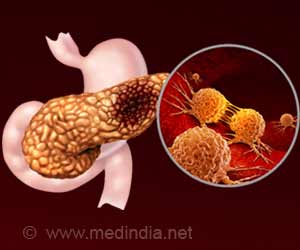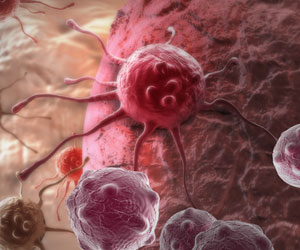Pancreatic cancer tumor classification was found to optimize treatment choices, revealed study.

‘One subtype of pancreatic cancer showed poor responses to common therapies and also had worse survival.’





"Our study evaluated the best way to classify tumors according to available treatment response data from prior clinical trials," said Yeh, who is a professor of surgery and pharmacology and vice chair for research in the UNC School of Medicine Department of Surgery. "Our hope is that we can use this information to tailor treatments, and potentially avoid giving therapies that may not work well for certain patients." Pancreatic cancer is one of the deadliest cancer types, with 9.3 percent of patients, or fewer than one in 10, surviving five years after diagnosis, according to the National Cancer Institute. The disease is typically diagnosed in later stages, when the cancer has already spread.
In 2015, UNC Lineberger researchers discovered two major subtypes of pancreatic cancer based on the molecular and genetic features of the disease. However, several other research groups reported different classification systems with three and four subtypes. Researchers said consensus was lacking regarding which of the proposed systems was optimal for clinical decision-making in pancreatic cancer.
To address this, Yeh, Rashid and colleagues first analyzed data from two recent clinical trials for pancreatic cancer to better understand which tumor classifications aligned with treatment responses. They found the two-subtype classification best aligned with treatment outcome data from two clinical trials.
After analyzing five independent pancreatic cancer studies, they also found that the two-subtype system best explained differences in overall patient survival, with patients classified as having basal-like tumors showing worse survival outcomes.
Advertisement
Importantly, they also saw in their data that patients classified as having the basal-like subtype showed much poorer response rates to treatments than the other subtype.
Advertisement
The other tumor type, which they called "classical," showed a better response to FOLFIRINOX treatments.
"We want to know what therapies are best for the patient so that we can maximize response and quality of life," Yeh said. "For pancreatic cancer, where time is more limited, this becomes even more important."
They also reported they were able to simplify and adapt their classification method so it can be used in the clinic and used to generate subtype predictions for a single patient.
Their new subtype classification method, generated using machine-learning approaches, relied on comparisons of how just nine pairs of genes are expressed. They found this method was extremely accurate, even when it was used to classify tumor samples that were processed and stored differently and used different methods of gene expression measurement.
"This study basically provides the evidence that this is something we can feasibly do in the clinic," Yeh said.
They are working to bring of their classification algorithm, which they called PurIST, into a form that can be used in future clinical trials at the North Carolina Cancer Hospital, the University of Rochester and the Medical College of Wisconsin.
Yeh said their next step is to conduct clinical trials to continue to try to understand how the tumor subtypes can inform how patients respond to treatment. They are also trying to understand the differences between the two subtypes.
"We want to use the prediction model we developed in actual trials to ensure patients are placed on optimal therapies up-front in order to optimize survival and other outcomes," Rashid said.
Source-Eurekalert















